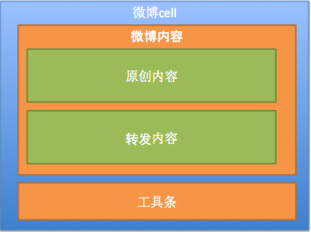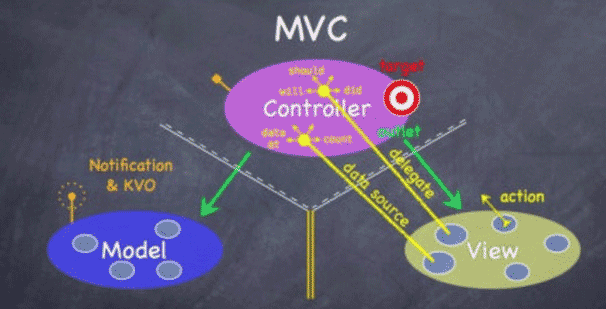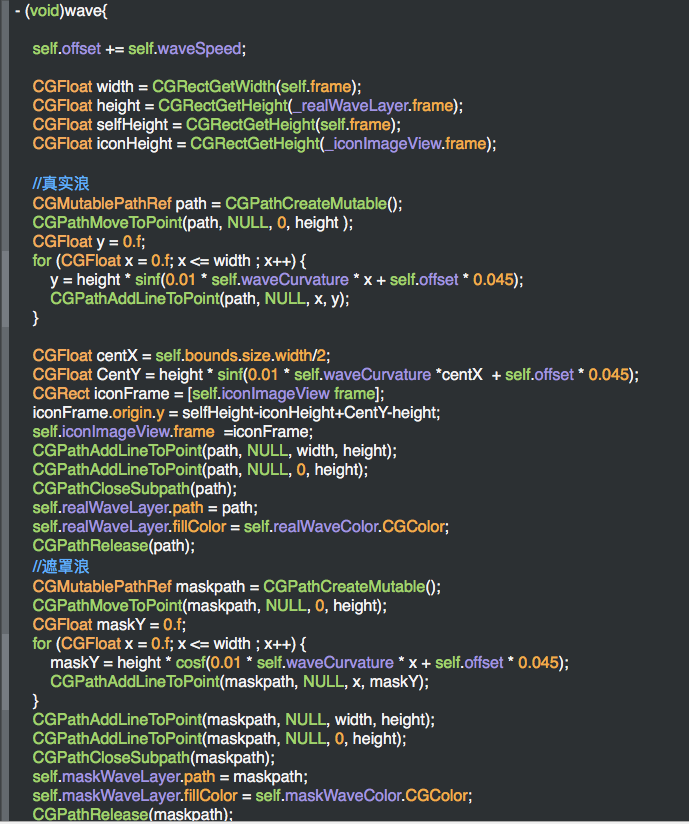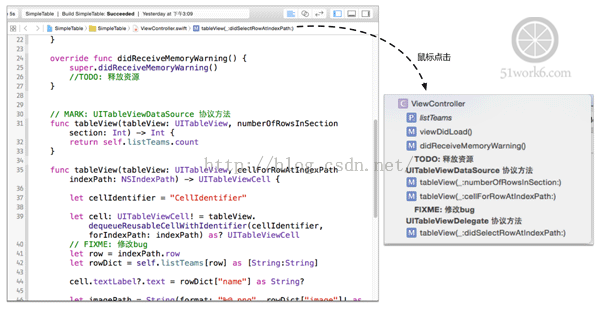iOS開發之UITableView詳解
一、UITableView基本介紹
默認的UITableView有2種風格:
- UITableViewStylePlain(不分組)
- UITableViewStyleGrouped(分組)
UITableView中的數據只有行的概念,沒有列的概念,UITableView的每行數據就是一個UITableViewCell。
自帶的UITableViewCell的類型選擇有:
復制代碼 代碼如下:
typedef NS_ENUM(NSInteger, UITableViewCellStyle) {
UITableViewCellStyleDefault, // 左側顯示textLabel(不顯示detailTextLabel),imageView可選(顯示在最左邊)
UITableViewCellStyleValue1, // 左側顯示textLabel、右側顯示detailTextLabel(默認藍色),imageView可選(顯示在最左邊)
UITableViewCellStyleValue2, // 左側依次顯示textLabel(默認藍色)和detailTextLabel,imageView可選(顯示在最左邊)
UITableViewCellStyleSubtitle // 左上方顯示textLabel,左下方顯示detailTextLabel(默認灰色),imageView可選(顯示在最左邊)
};
二、UITableViewDataSource數據源
數據源的作用就是告訴UITableView,我該顯示什麼數據
復制代碼 代碼如下:
#pragma mark 常用數據源方法
#pragma mark 返回分組數
- (NSInteger)numberOfSectionsInTableView:(UITableView *)tableView
#pragma mark 返回每組行數
- (NSInteger)tableView:(UITableView *)tableView numberOfRowsInSection:(NSInteger)section
#pragma mark 返回每行的單元格
- (UITableViewCell *)tableView:(UITableView *)tableView cellForRowAtIndexPath:(NSIndexPath *)indexPath
#pragma mark 返回每組頭標題名稱
- (NSString *)tableView:(UITableView *)tableView titleForHeaderInSection:(NSInteger)section
#pragma mark 返回每組尾部說明
- (NSString *)tableView:(UITableView *)tableView titleForFooterInSection:(NSInteger)section
計算分組數 -> 計算每組行數 -> 生成分組索引 -> 生成單元格
注意:cellForRowAtIndexPath只生產當前顯示在界面上的單元格
三、UITableViewDelegate代理
代理的作用是告訴UITableView,我該怎麼顯示和響應
復制代碼 代碼如下:
#pragma mark - 常用代理方法
#pragma mark 設置分組頭部的內容高度
- (CGFloat)tableView:(UITableView *)tableView heightForHeaderInSection:(NSInteger)section
#pragma mark 設置每行高度(每行高度可以不一樣)
- (CGFloat)tableView:(UITableView *)tableView heightForRowAtIndexPath:(NSIndexPath *)indexPath
#pragma mark 設置分組尾部的內容高度
- (CGFloat)tableView:(UITableView *)tableView heightForFooterInSection:(NSInteger)section
#pragma mark 點擊了某一行
- (void)tableView:(UITableView *)tableView didSelectRowAtIndexPath:(NSIndexPath *)indexPath
#pragma mark 設置分組的頭部視圖
- (UIView *)tableView:(UITableView *)tableView viewForHeaderInSection:(NSInteger)section;
#pragma mark 設置分組的尾部視圖
- (UIView *)tableView:(UITableView *)tableView viewForFooterInSection:(NSInteger)section;
四、UITableView刷新列表方法
復制代碼 代碼如下:
#pragma mark 刷新整個表格
- (void)reloadData;
#pragma mark 刷新指定的行
- (void)reloadRowsAtIndexPaths:(NSArray *)indexPaths withRowAnimation:(UITableViewRowAnimation)animation;
#pragma mark 刷新指定的分組
- (void)reloadSections:(NSIndexSet *)sections withRowAnimation:(UITableViewRowAnimation)animation;
#pragma mark 刪除時刷新指定的行數據
- (void)deleteRowsAtIndexPaths:(NSArray *)indexPaths withRowAnimation:(UITableViewRowAnimation)animation;
#pragma mark 添加時刷新指定的行數據
- (void)insertRowsAtIndexPaths:(NSArray *)indexPaths withRowAnimation:(UITableViewRowAnimation)animation;
五、UITableViewCell的重用機制
在UITableView內部有一個緩存池,專門用來緩存UITableViewCell,因為UITableView不是一下子顯示全部Cell,而是以 所見即所得 的方式,手機上看的見的Cell,才有存在的對象UITableViewCell實例。具體表現如下:
每次顯示新的Cell的時候,都是先從緩存池中取出對應的UITableViewCell對象,進行 重新初始化 顯示。如果緩存池中沒有,才創建新的UITableViewCell對象
每當某個Cell被移出 可見區域 外後,就會被 回收 到緩存池中
所以盡管要展示的數據巨大,但內存中存在的UITableViewCell也是有限的,極大的降低了對內存的需求。
復制代碼 代碼如下:
# pragma mark 在tableView:cellForRowAtIndexPath:方法中使用UITableView的重用機制
// 由於此方法調用十分頻繁,cell的標示聲明成靜態變量有利於性能優化
static NSString *cellIdentifier = @"UITableViewCellIdentifierKey1";
// 首先根據標識去緩存池取
UITableViewCell *cell = [tableView dequeueReusableCellWithIdentifier:cellIdentifier];
// 如果緩存池沒有找到,則重新創建並放到緩存池中
if(!cell){
cell = [[UITableViewCell alloc] initWithStyle:UITableViewCellStyleValue1 reuseIdentifier:cellIdentifier];
}
六、系統自帶的UITableViewCell

我們基本上很少使用系統自帶的UITableViewCell,樣式太過於死板了。
七、自定義Cell
基本步驟:
自定義類XXXTableViewCell,繼承UITableViewCell
重寫-(id)initWithStyle:reuseIdentifier:方法,添加子控件
最好重寫layoutSubView方法,設置子控件frame
然後在UITableView的代理方法tableView:cellForRowAtIndexPath:中使用重用機制創建該類XXXTableViewCell,再對cell進行初始化

八、MVC模式

- 上一頁:iOS開發之視圖切換
- 下一頁:IOS程序開發之禁止輸入表情符號實例代碼




